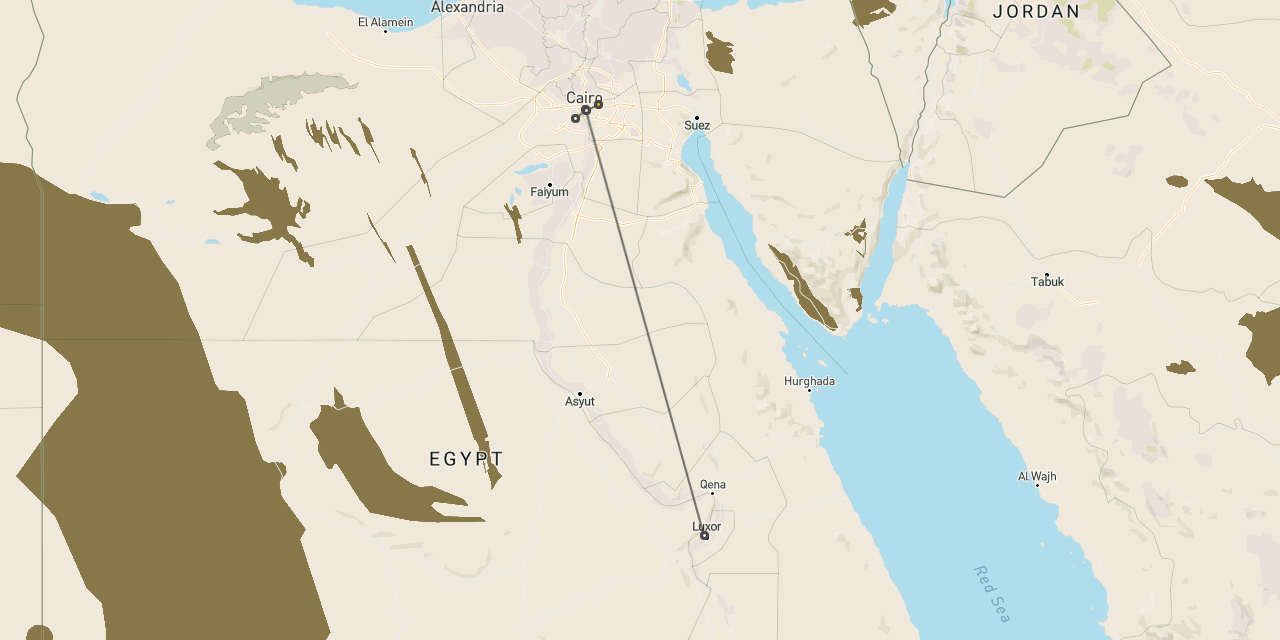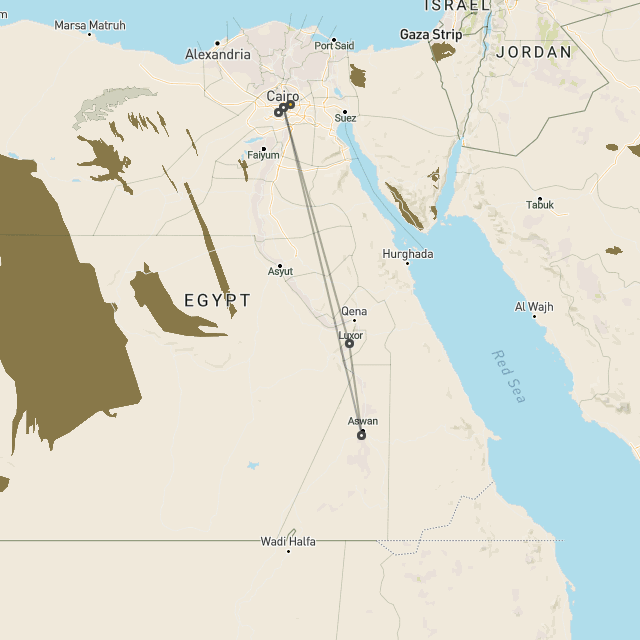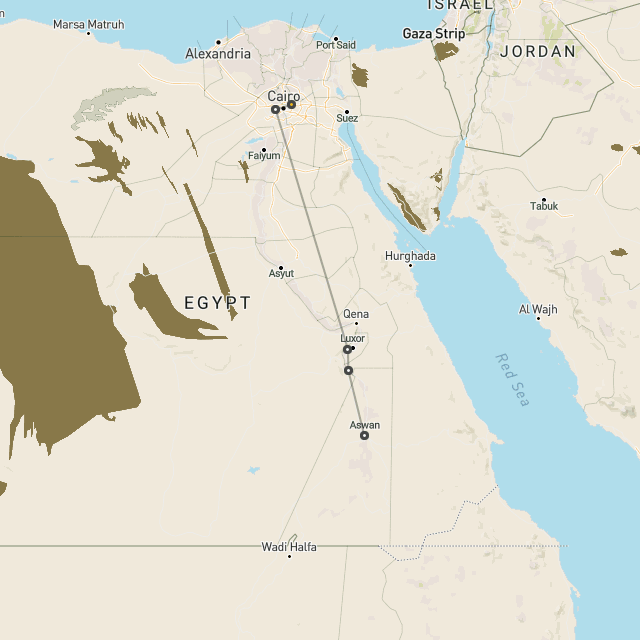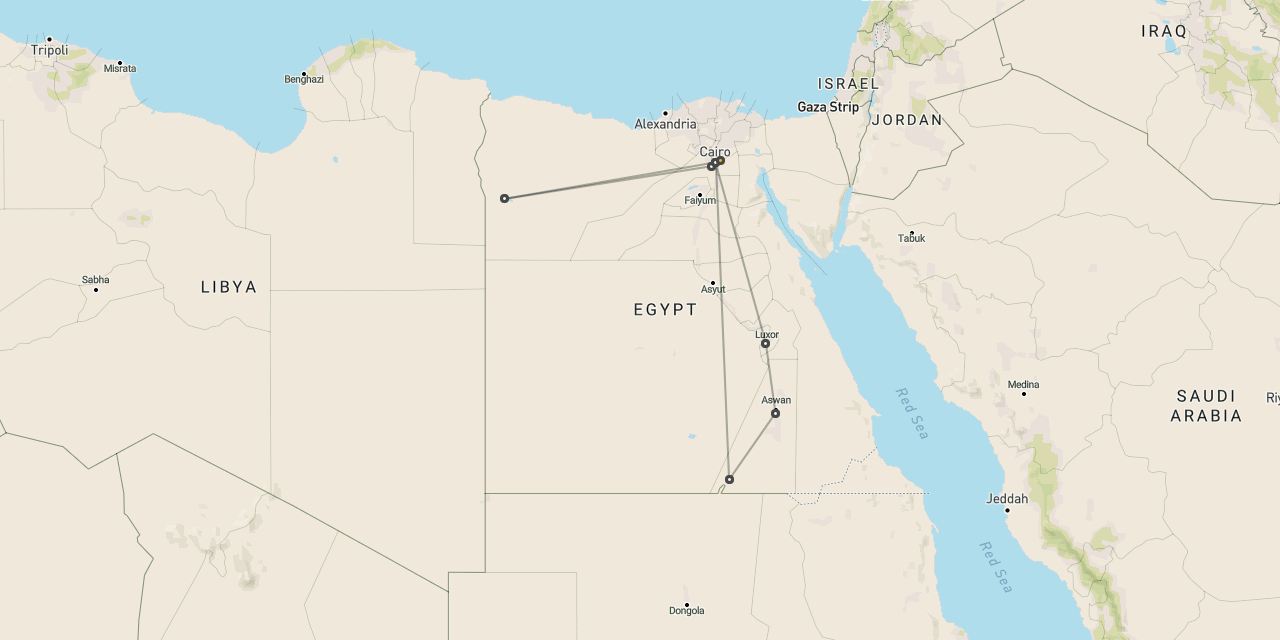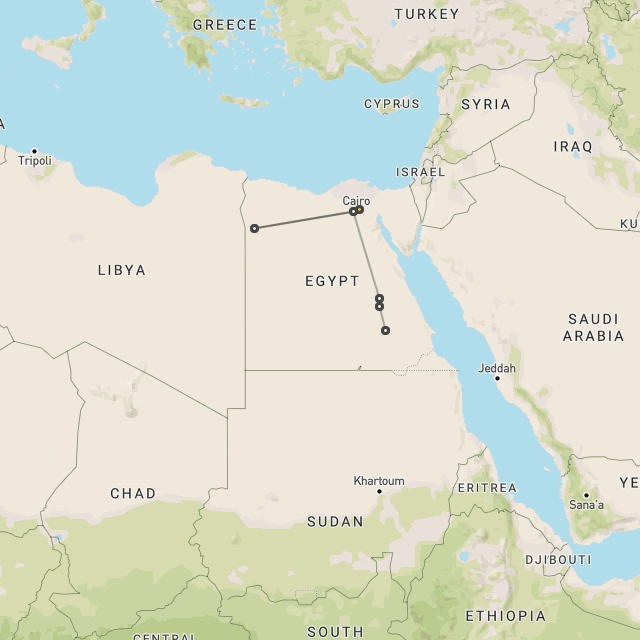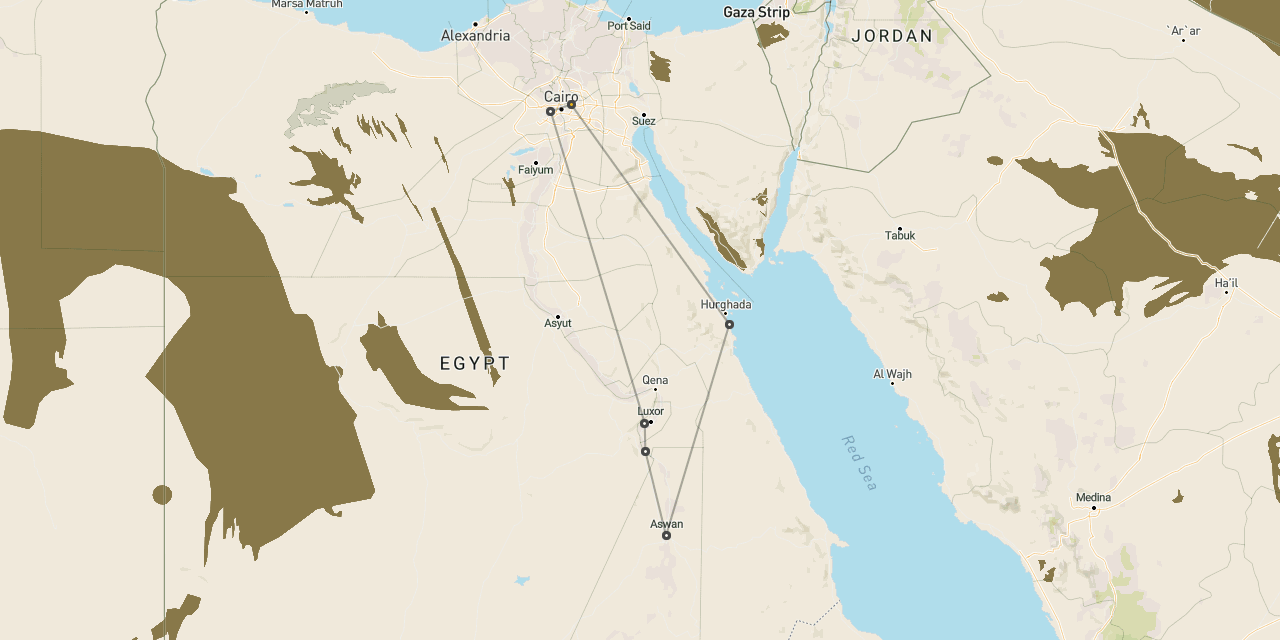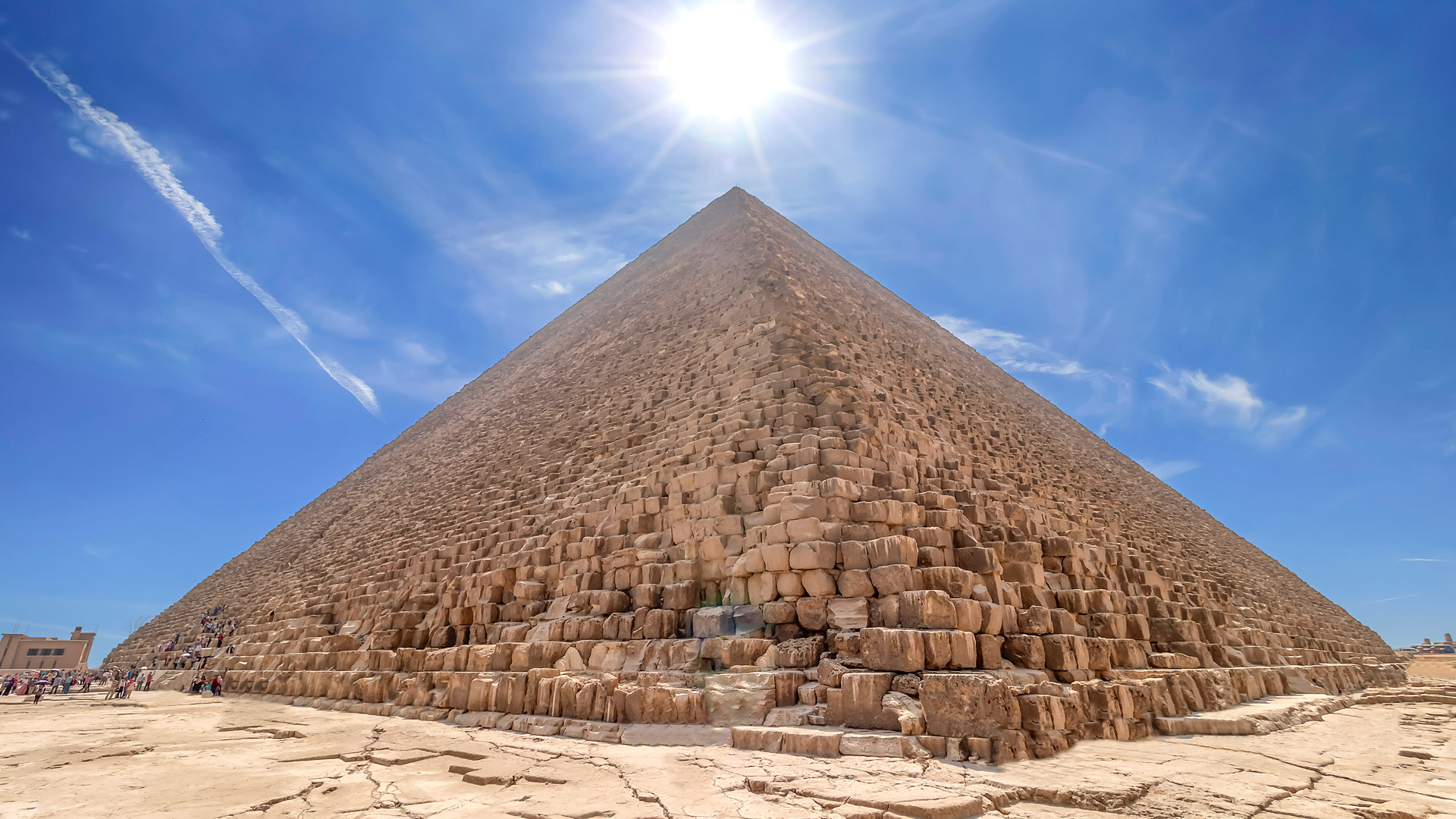
Travel to Cairo
Cairo
is the historic and chaotic capital,
home to the pyramids of Giza
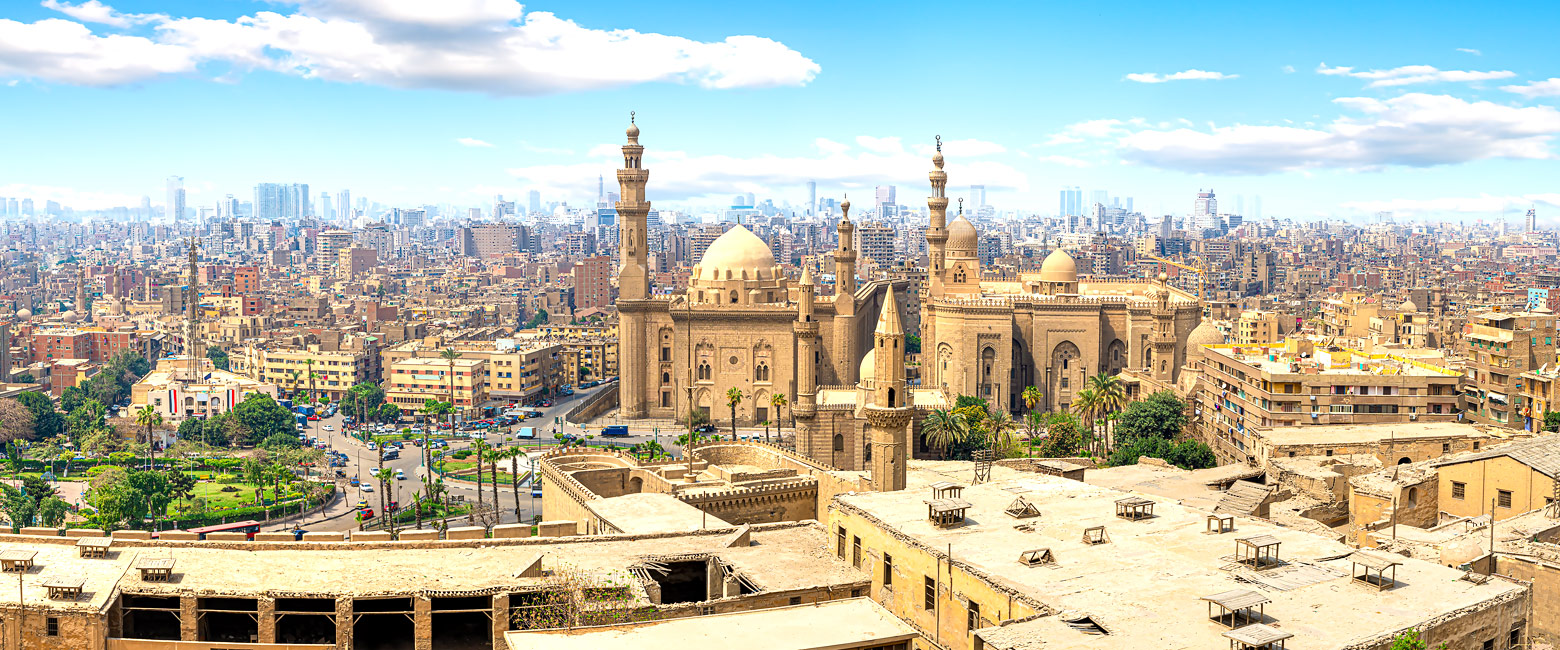
the sixth largest city in the world
Set on the Nile, around 200 km inland from the Mediterranean, Cairo is the vast and sprawling capital of Egypt. With a population of over 21 million people, it is the largest city in the Arab world, the sixth-largest on Earth by population.
Cairo is not an ancient city, having been first established around 640 AD, following the Muslim conquest. But the location at the point where the River Nile first starts to fan out into a delta is of huge historical significance.
Most notably, the Great Pyramids of Giza loom over the city from their hilltop location, 12 km to the west of the old city centre (although the modern suburbs have now engulfed the pyramids). The great ancient cities of Memphis and Heliopolis both lie concealed below the river mud in the surrounding area.
The vast majority of our guests do not actually stay in the centre of Cairo, but instead head out to Giza, which is a good deal less hectic and is much more convenient for the main archaeological sites.
However, the city does contain some places of considerable interest, including the Citadel of Salah Al-Din and various markets including the famous Khan al-Khalili bazaar. These can be visited either from Giza, or when travelling across town between Giza and the international airport.
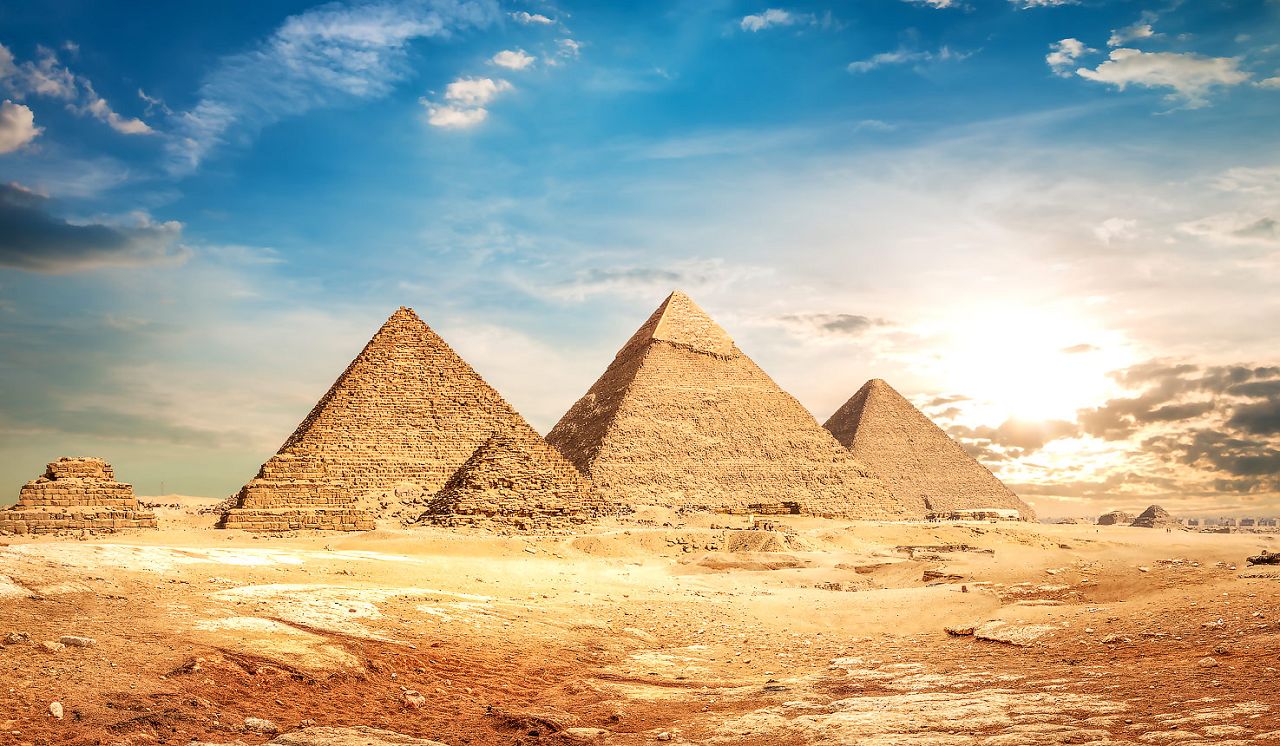
Gallery
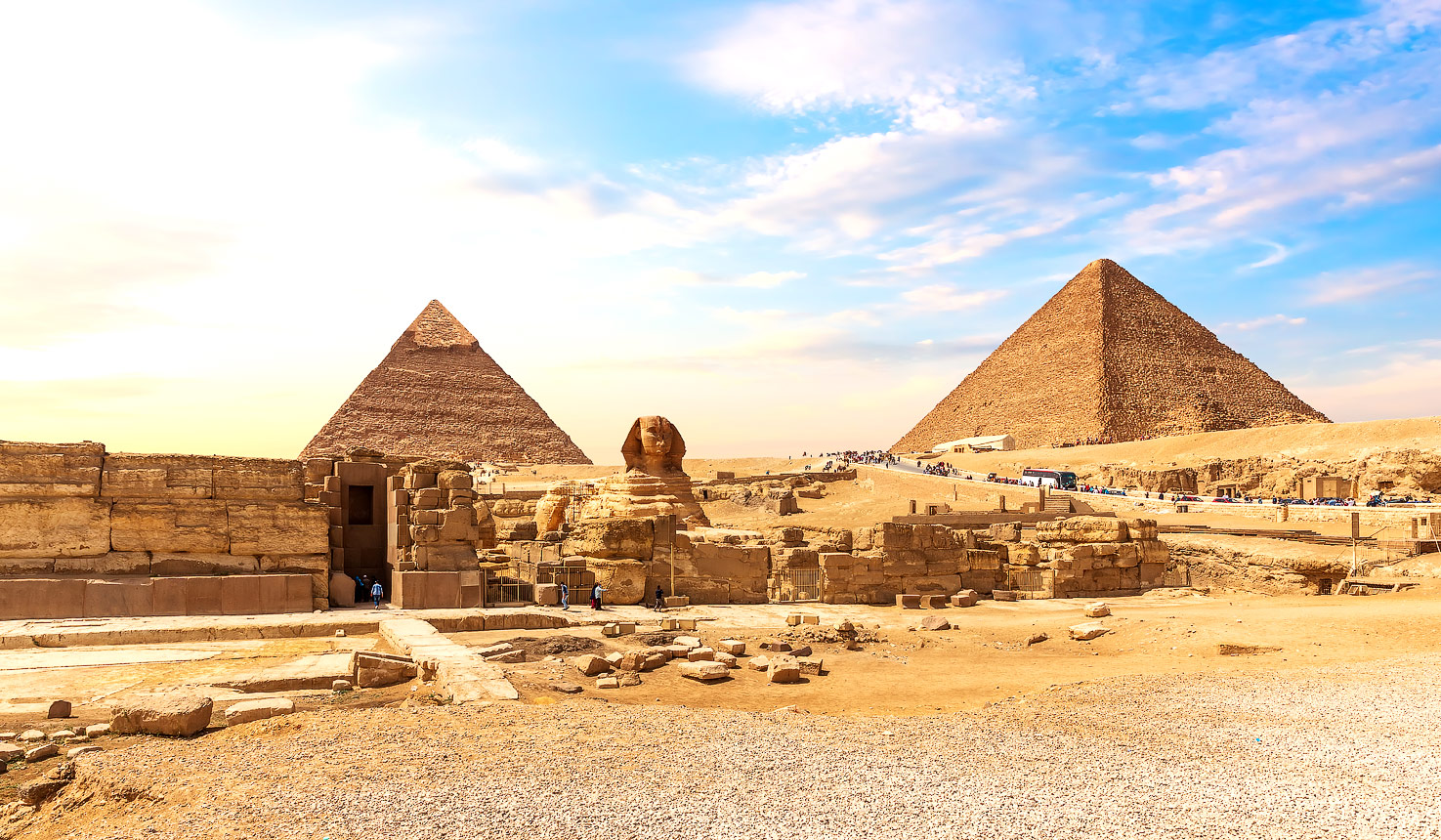
Video
Map
Wherever you choose to stay in the greater Cairo area, you will most likely want to explore the three key areas of Giza (the famous pyramids and the new museum), Saqqara (the arguably more interesting older pyramids) and the Old City (souks, bazaars and mediaeval sites).
The traffic in Cairo is famously crazy, partly in terms of jams, but mainly in the crazy way that the locals drive. You will need to endure this during your stay, it is an integral part of the experience, for better or for worse.
We usually recommend three nights at the front end of a trip in Giza, which gives you a full day for each of the two pyramid areas. If you subsequently head south to Luxor on the overnight train, then you can cut this to two nights in Cairo.
If you specifically want to explore the Old City, then we usually include a night at the end of a trip, when guests have had some time to toughen up and after which you will have a long flight to catch up on the terrible night’s sleep you will most likely have experienced.
Seasonality
The best time to visit Cairo is widely considered to be the winter months of Nov-Mar, but we sometimes favour other times of year, when temperatures may be higher, but visitor numbers are often much lower.
Cairo experiences a conventional northern hemisphere climate, with a hot dry summer centred on May-Sep and a warm dry winter Nov-Mar.
May-Sep : Summer
During the May-Sep summer the daytime temperatures typically reach 41C, with night-time temperatures holding up around 23C. Although these temperatures may seem concerning, the relative humidity drops considerably, meaning that comfort temperatures are not so bad, at least during the day. This season can also be advantaged by light summer breezes out on the river. However, given the warm nights, we do recommend that you stay somewhere with air-conditioning.
Despite being ‘out of season’, visitor numbers do increase during the European vacation season, centred on Jul/Aug, so best to head for May, June or late September if you can.
Some hotel prices can also be considerably lower during some of these months.
Oct : Autumn
The month of October represents a transition between summer and winter conditions and, in many ways, offers the best of both worlds, with visitor traffic also being relatively low.
Nov-Mar : Winter
During the Nov-Mar winter the daytime temperatures typically reach 25C, with nighttime temperatures plunging to 8C. Relatively humidities rise considerably, meaning that the middle of the day can be surprisingly uncomfortable, given the relatively low absolute temperatures.
These warm (rather than hot) conditions have led to winter being the most popular time to visit, meaning that visitor numbers reach their peak, especially around Dec-Jan. We therefore recommend November to mid-December and mid-January to March (excluding a week either side of Easter), although even then you probably need to deploy traffic avoidance measures when visiting the key sites.
Some hotel prices can also be considerably higher during some of these months.
Apr : Spring
The month of April represents a transition between winter and summer conditions and, in many ways, offers the best of both worlds, with visitor traffic also being relatively low (except for a week either side of Easter.
Getting there
Set about 20 km east of the city centre, Cairo Airport is one of the busiest in the world.
It has good international flight connections with Europe, Asia and Africa. Connections to the Americas are rather more spartan, with only Egyptair offering regular non-stop flights to North America (notably New York and Washington). Most people either take these services, or fly via London or Frankfurt.
From the airport, the city centre can be reached in 20-40 minutes, depending on traffic. Giza and Saqqara are usually more like 40-60 minutes.
We only recommend private-guided transfers. The local taxi drivers can be a bit challenging to deal with.
two full days are needed to cover Giza and Saqqara
let us know your thoughts about Egypt
and we will help you create the perfect trip
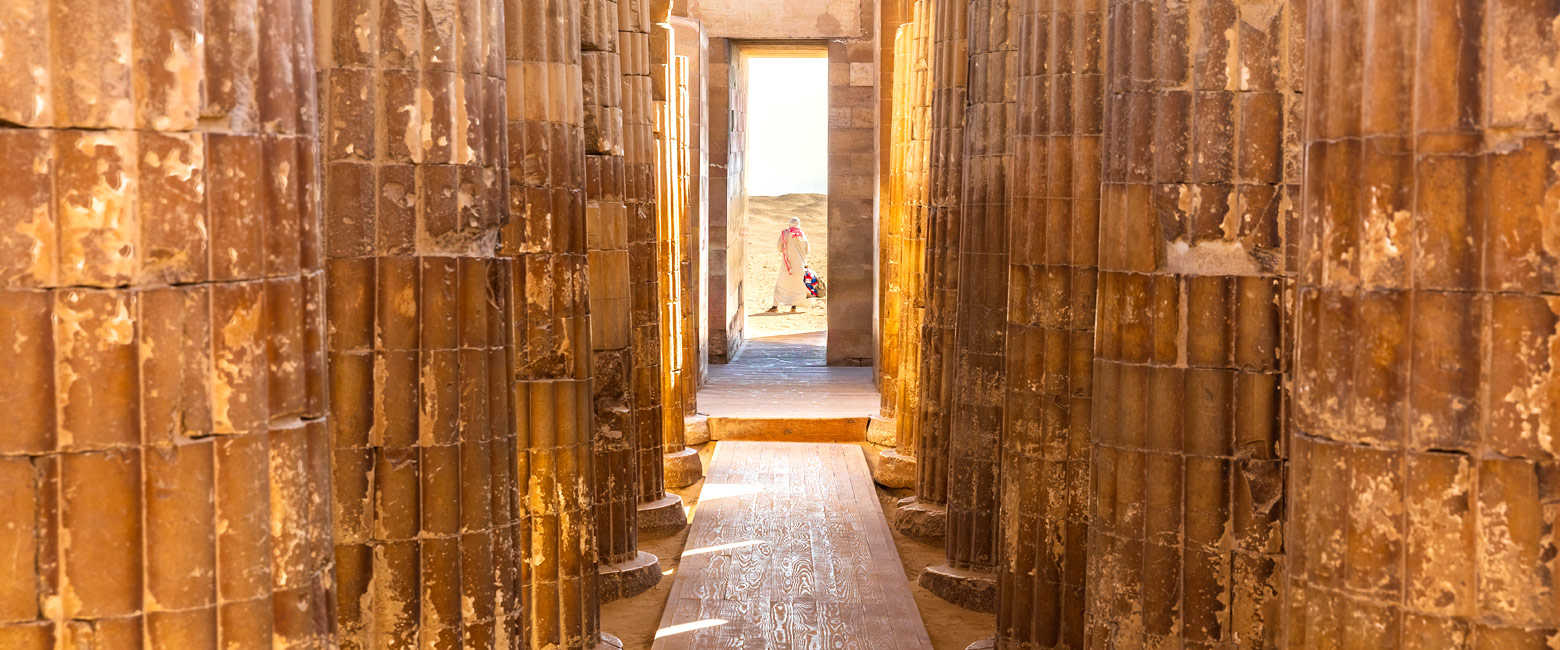
Extraordinary tailor-made adventures,
from earthy and edgy to easy and extravagant
From around USD 2500 per person, you set the ceiling
Sample Trips
Here are some of our popular trip shapes

Get started on your trip
It’s never too soon to get in touch, we are here to help with every stage of your planning.
Best Lodges
We regularly inspect and photograph all of the the best lodges, to ensure that we always recommend the most suitable options
Key Locations
Take a look around related locations. Click ‘View more’ to explore locations further afield.










































